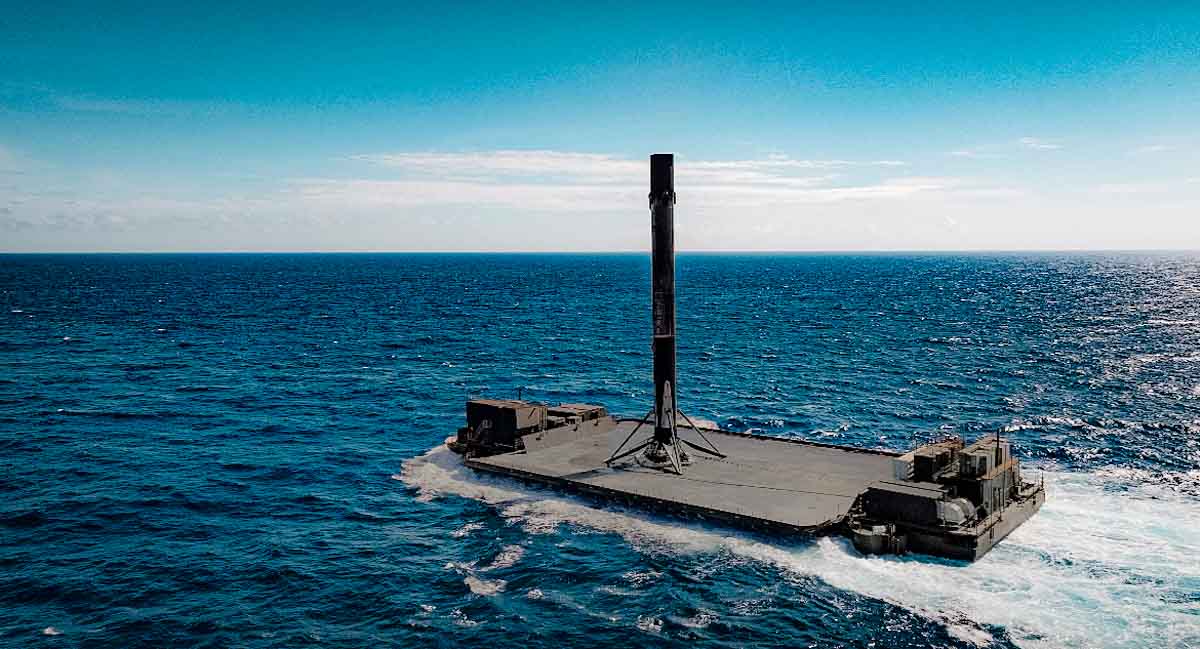On February 18, 2025, SpaceX achieved a groundbreaking milestone in spaceflight history by successfully landing its Falcon 9 first-stage booster on the “Just Read the Instructions” (JRTI) droneship off the coast of The Bahamas.
This marked the company’s first-ever international landing, further showcasing its expanding capabilities in global aerospace operations.
Falcon 9 aboard the Just Read the Instructions droneship after successfully completing our first international landing off the coast of The Bahamas pic.twitter.com/o59NcQhRXP
— SpaceX (@SpaceX) February 19, 2025
Mission Overview
The mission began with a flawless liftoff from Cape Canaveral Space Force Station in Florida at 6:22 p.m. EST. The Falcon 9 rocket carried a payload of 23 Starlink satellites, which were deployed into low Earth orbit (LEO) as part of SpaceX’s ongoing efforts to enhance global internet connectivity.
Approximately eight minutes after launch, the first stage of the rocket executed a precision landing on JRTI, stationed in the Atlantic Ocean near The Bahamas. This landing represents a significant step forward in SpaceX’s reusability efforts, enabling more efficient and cost-effective launch operations.
A Strategic Move for SpaceX
Previously, SpaceX landings were restricted to U.S. territorial waters, primarily near Florida or California. However, this successful touchdown in international waters demonstrates the company’s ability to adapt to new launch trajectories and optimize its recovery strategies.
The decision to position JRTI near The Bahamas was strategic. It allows for:
- Increased Falcon 9 Performance: By placing the droneship further downrange, the rocket can carry heavier payloads while still returning the booster for reuse.
- Expanded Recovery Options: Operating in international waters provides SpaceX with more flexibility to accommodate different mission profiles.
- Favorable Weather Conditions: The region often experiences more stable oceanic conditions, ensuring a higher probability of successful landings.
Global Collaboration and Impact
This landmark mission was made possible through collaboration between SpaceX and the Bahamian government. During the live broadcast, Deputy Prime Minister Isaac Chester Cooper emphasized the significance of this event for The Bahamas, stating:
“This is a historic moment for our nation. Hosting SpaceX’s first international landing positions The Bahamas as a key player in the global aerospace industry. We look forward to fostering further innovation and cooperation in this field.”
A historical moment for #TheBahamas as we welcomed Falcon 9 to our country! Even @SpaceX knows its #BetterinTheBahamas! https://t.co/wMkkjYNEkd
— The Bahamas (@VisitTheBahamas) February 19, 2025
The successful landing not only highlights The Bahamas’ emerging role in spaceflight operations but also opens the door for future aerospace investments and technological partnerships.
Booster B1080
The Falcon 9 booster used in this mission, identified as B1080, was on its 16th flight. It has previously supported high-profile missions, including:
- Four Dragon spacecraft missions to the International Space Station (ISS)
- The European Space Agency’s Euclid observatory launch
- Astra 1P communications satellite deployment
- Nine Starlink missions
With this latest mission, B1080 continues SpaceX’s legacy of rapid booster reusability, reducing costs and increasing launch frequency.
The Future of SpaceX’s International Landings
This successful mission sets a precedent for future international recoveries, allowing SpaceX to explore new landing locations that further optimize its operations. It also signals the growing global impact of commercial spaceflight, as more countries collaborate with private space companies to push the boundaries of exploration and innovation.
As SpaceX continues to expand its launch and recovery infrastructure, this milestone marks yet another step toward making space travel more sustainable and accessible. The historic landing off the coast of The Bahamas is not just a win for SpaceX but a testament to the ever-evolving landscape of space exploration.
